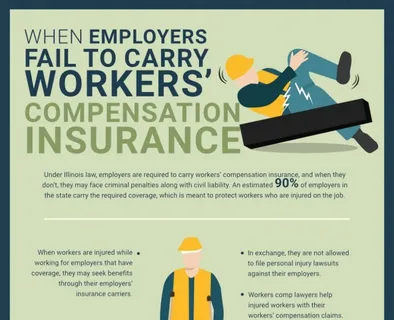Introduction
Workers’ compensation insurance might sound like a complex topic, but it’s essentially a safety net for employees who get injured or ill because of their jobs. This employer-funded program ensures that workers receive medical care and compensation for lost wages when they can’t work due to workplace injuries. Let’s dive into the details and demystify this crucial aspect of workplace safety and financial security.

What is Workers’ Compensation Insurance?
Workers’ compensation insurance is a type of insurance that provides benefits to employees who suffer job-related injuries or illnesses. It’s designed to cover medical expenses, rehabilitation costs, and a portion of lost wages. The core idea here is simple: help employees recover without the financial burden falling solely on their shoulders1.
The Claims Process in Workers’ Compensation
If you ever find yourself needing to claim workers’ compensation, knowing the process can greatly simplify things. Firstly, you file a claim with your employer, who is legally bound to forward it to their insurance. Here’s where the Workers’ Compensation Board comes into play, stepping in to handle any disputes between you and the insurance company. This process ensures that claims are handled fairly, focusing on getting you the support you need rather than getting tangled in blame1.
Employer Responsibilities and Employee Rights
Employers have a big part to play in this system. They are obligated to keep the workplace safe to prevent injuries and must cover the costs associated with workers’ compensation insurance. This doesn’t just protect employees; it also protects businesses from potential lawsuits. On the flip side, employees have rights too. They’re entitled to compensation if they get injured, regardless of whose fault it is. This balance helps maintain a fair workplace where safety is prioritized1.
Financial Implications of Workers’ Compensation for Employers
Now, let’s talk numbers. Employers pay premiums for workers’ compensation insurance, and these can vary. Premiums are calculated based on the level of risk associated with different types of work. For example, a construction worker might have a higher premium than an office worker. Employers can work on reducing these costs by implementing strict safety protocols and regular training. This not only lowers the risk of injuries but can also reduce the premiums they need to pay1.
Common Misunderstandings About Workers’ Compensation
There are plenty of myths floating around about workers’ compensation. For instance, some think that if they caused their injury, they aren’t eligible for compensation. However, workers’ compensation is a no-fault system, meaning employees are entitled to benefits regardless of who was at fault for the injury1.
What Does Workers’ Compensation Cover?
Workers’ compensation insurance is designed to handle a variety of situations, offering coverage for medical expenses, rehabilitation services, and wage replacement. Essentially, this insurance is a safety net that ensures that employees are financially protected if they suffer a job-related injury. From the moment an employee is injured until they can return to work, this insurance covers all necessary medical treatments and a portion of their earnings2.
Injuries and Conditions Covered Under Workers’ Compensation
Workers’ compensation covers a broad range of injuries and conditions, from acute injuries like fractures or burns to chronic problems like repetitive stress injuries or long-term respiratory issues. Understanding what’s covered is vital for every working professional. Here are typical conditions that qualify:
- Work-related accidents resulting in injuries
- Occupational diseases caused by exposure to harmful conditions at work
- Rehabilitation services post-injury to help return to work2

How to File a Claim for Workers’ Compensation
Filing a compensation claim might seem daunting, but it’s crucial for accessing the benefits you deserve. The claim process requires specific documentation and adherence to certain procedures. Here’s how you can navigate it:
- Report the injury to your employer as soon as possible.
- Fill out the necessary claim forms provided by your employer or the insurance company.
- Submit the forms and any required medical documentation.
- Follow up with the Workers’ Compensation Board if there are any disputes or delays2.
Determining Your Eligibility for Workers’ Compensation
Eligibility for workers’ compensation depends on several factors, including the nature of the injury and whether it occurred during the course of employment. Most employees are covered, but there are exceptions, such as independent contractors or certain types of temporary workers. It’s important to check your specific situation to determine eligibility2.
Comparing Workers’ Compensation with Other Benefits
Workers’ compensation is just one part of the broader landscape of employee benefits. It differs from health insurance, disability insurance, and other forms of coverage in several key ways. For instance, workers’ compensation specifically covers work-related injuries and illnesses, while health insurance covers a broader range of medical issues. Understanding these differences can help employees make informed decisions about their benefits2.

Conclusion
Workers’ compensation insurance is a vital component of workplace safety and financial security. It ensures that employees who suffer job-related injuries or illnesses receive the medical care and financial support they need to recover. By understanding the claims process, employer responsibilities, and employee rights, both employers and employees can navigate this system more effectively. Remember, safety first, and don’t hesitate to file a claim if you need to—your health and well-being are worth it!
1: What Is Workers’ Compensation Insurance? – aupeo.com 2: What Does Workers Compensation Cover? | Aupeo.com
Feel free to ask if you have any more questions or need further details!



